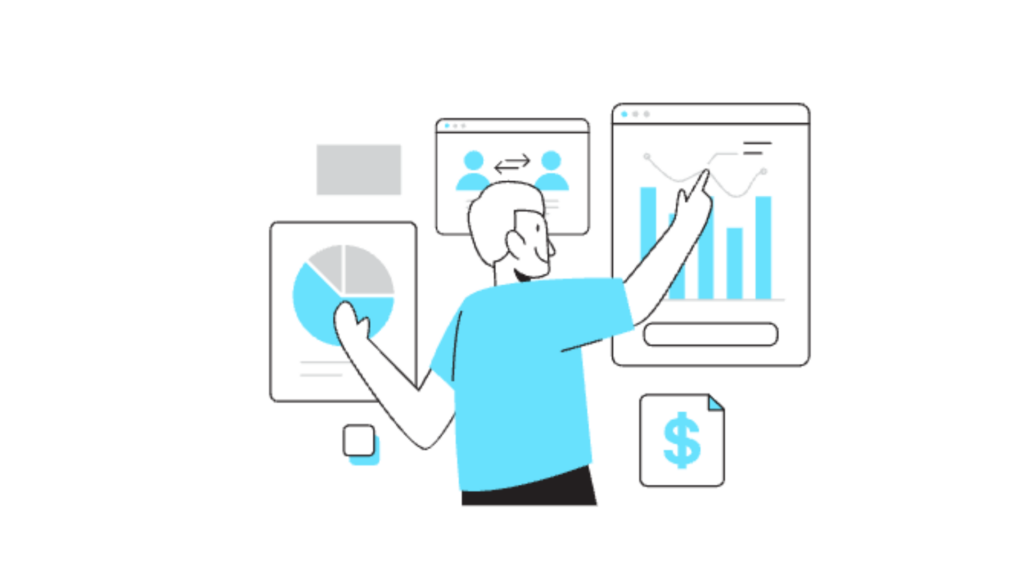Exploring End User Meaning: A Comprehensive Guide

In today’s digital age, the term “end user” has become ubiquitous, spanning various industries from technology to healthcare. Understanding who the end user is—whether referring to a product, an application, or a service—is crucial for businesses aiming to meet and exceed customer expectations. This comprehensive guide delves into the meaning, importance, and application of understanding end users. By exploring the term’s dictionary definition, its evolution, and its central role in user experience, readers will gain a well-rounded understanding of how knowing the end user benefits product design and service delivery.
What Does “End User” Mean in the Dictionary?
Breaking Down the Term “End User” as a Noun in the Dictionary
The term “end user” is extensively defined in advanced learner’s dictionaries as a noun, emphasizing its grammatical use in the English language. The dictionary elucidates the end user as a person or entity that utilizes a product or service primarily for its intended purpose. Unlike intermediaries involved in the development, trade, or resale processes, the end user is the final recipient in the product’s lifecycle. This definition lays the foundational understanding of the term, guiding business strategies and product developments aimed at satisfying the end user’s needs.
The Evolution of the Term “End User” Over Time
Historically, the term “end user” emerged with the rise of consumer goods and technology, particularly as products and services became more specialized. Initially, it referred mainly to individuals who buy and use computing products. However, by 2024, its application has expanded to encompass a broader range of scenarios, signifying anyone who benefits from the use of a product or service, irrespective of whether they are the purchaser or a beneficiary. This evolution reflects the growing importance of tailoring user experiences to meet diverse end user needs across industries.
Key Distinctions Between “End User” and Related Terms
Understanding the key distinctions between an “end user” and related terms such as “customer” is pivotal. A customer is anyone who engages in a transaction to acquire a product or service. However, the end user may not always be the customer. For example, in business-to-business transactions, the customer might be one company buying software for use by another company, their end users. This differentiation underscores the importance of identifying the end user to tailor products and services that genuinely meet the end user’s requirements, beyond just making a sale.
Understanding End Users in the Context of User Experience
Why End User Experience Is Crucial for Product Design
User experience encompasses all aspects of the end user’s interaction with a company, its services, and its products, including in specialized fields such as clinical NGS (Next-Generation Sequencing), where intuitive design, data accessibility, and reliability are critical to ensuring effective and efficient genomic analysis. Prioritizing end user experience in product design ensures the creation of high-quality products that are not only functional but also pleasurable to use. Designing with the end user in mind requires a deep understanding of the user’s needs, preferences, and limitations. It’s a blend of art and science aimed at crafting products for end users that enhance satisfaction and encourage loyalty.
Examples of How End User Feedback Shapes Products
Examples of end users influencing product development are abundant. From online services enhancing user interfaces based on usability tests to companies reformulating products in response to consumer surveys, end user feedback is invaluable. For instance, a software company may conduct usability testing to observe how end users interact with its application, using findings to eliminate confusing features and enhance functionality. This feedback loop ensures products evolve in alignment with end user expectations, fostering a cycle of continuous improvement. Many organizations also collaborate with product strategy consultants to interpret feedback and align development with broader business goals.
The Role of Usability Testing in Understanding End Users
Usability testing plays a critical role in understanding end users by providing direct insight into how they use and perceive products and services. It involves observing end users as they interact with a product, noting challenges and preferences to refine product design. This process helps identify discrepancies between how designers intend a product to be used and how it is actually used, enabling teams to make user-centered improvements. Effective usability testing is iterative, emphasizing the end user’s experience to ensure the product accomplishes what it’s meant to for the end user.
Examples of End Users Across Various Industries
End Users in Technology: From Consumers to Corporate Users
In the technology sector, you can hire UX designer to cater to diverse end users, ranging from individual consumers using smartphones and apps for personal purposes to employees in organizations utilizing specialized software to accomplish business tasks. The breadth of end users in this sector illustrates the diverse considerations developers must account for when designing products. Understanding these varied end users’ contexts and requirements is fundamental to delivering solutions that resonate on a wide scale, from enhancing productivity to providing entertainment. A thoughtful approach to UI and UX design is essential to ensure that these solutions are not only functional but also intuitive and engaging for all user types.
How the Definition of an End User Varies by Product or Service
The definition of an end user significantly varies by product or service, underlining the term’s versatility. For a pharmaceutical company, the end user is the patient who takes its medication; for a video game developer, it’s the gamer (purchasing Steam keys, for example); and for an event management platform, it’s the event planner. Each industry’s understanding of its end users shapes the design, functionality, and marketing strategies of its offerings. Recognizing this variability is key to developing user personas that guide the creation of targeted, effective solutions.
Identifying End Users in Services: The Difference Between a Customer and an End User
Identifying end users in services industries highlights the nuanced difference between a customer and an end user. In services, especially those mediated through digital platforms, the immediate customer might be an entity that avails a service on behalf of its clients—the real end users. For example, a company may purchase a field service management software for its employees, making the technicians the true end users. This distinction becomes crucial in tailoring service aspects like accessibility, user interface, and support to meet the actual users’ expectations.
How to Determine the End User for Your Product or Service
Steps to Clearly Define Your End User Population
Defining your end user population involves several key steps, starting with conducting thorough market research to understand potential users’ demographics, behaviors, and preferences. Creating detailed user personas that represent typical end users can help product teams visualize the target user, guiding decision-making in design and development. Ensuring these personas are based on real data and regularly updated to reflect changing user patterns is essential in keeping the product or service relevant and user-centered.
Common Mistakes in Identifying End Users and How to Avoid Them
One common mistake businesses make is assuming they already know their end users without engaging in comprehensive research. This assumption can lead to misaligned product features and overlooked user needs. To avoid this, businesses should continuously gather and analyze end user feedback through surveys, feedback tools,user testing, and interaction data. Keeping an open communication channel with end users, whether through social media, forums, or customer support, allows for ongoing adjustments based on actual user experiences and expectations.
Conducting Market Research to Understand Your End User’s Needs
Conducting effective market research is pivotal in understanding your end user’s needs. This involves both quantitative and qualitative methods, from surveys and questionnaires to in-depth interviews and focus groups. Analyzing data from these sources provides insights into the end user’s preferences, pain points, and desired features, informing a user-centric approach to product development. Effective market research requires a willingness to listen and adapt, positioning end users’ needs at the heart of product strategy.
Maximizing the End User Experience: Strategies and Best Practices
Designing with the End User in Mind: Principles to Follow
Designing with the end user in mind involves adhering to principles that prioritize usability, accessibility, and satisfaction. This means developing intuitive user interfaces, ensuring accessibility for users with disabilities, and creating enjoyable experiences. Such an approach necessitates a deep empathy for the end user, achieved through regular interaction and feedback collection. By embedding these principles into the design process, companies can create products that truly resonate with their end users.
Utilizing Feedback Loops to Continuously Improve End User Experience
Utilizing feedback loops is essential for continuously improving the end user experience. This involves regularly collecting, analyzing, and acting upon feedback from end users regarding their experiences and struggles with a product or service. Integrating this feedback into iterative design and development processes ensures that products evolve in response to user needs, fostering a culture of continuous improvement and innovation aimed at enhancing the end user experience. In some cases, businesses turn to external leadership, so understanding what is a fractional CTO can help companies bring in strategic technical guidance on a part-time basis to support these efforts without the full cost of a permanent executive.
Case Studies: Companies That Excelled by Focusing on End User Experience
Many companies have distinguished themselves by prioritizing end user experience, and their success stories serve as inspiring case studies. For example, a renowned technology company revamped its product line based on extensive end user feedback, resulting in increased market share and user satisfaction. Another example is an e-commerce giant that optimized its website navigation and checkout process, significantly boosting its sales and customer retention rates. These cases underscore the immense value of centering business strategies around understanding and improving the end user experience.
Q: What is the end user definition?
A: The end user definition refers to the person who uses a product or service in its final form. According to the English dictionary, an end user is a person who ultimately uses or intends to use the good or service, differentiating from those involved in the development or distribution of the product. End users may find themselves at the heart of product development processes, as businesses aim to understand and meet their needs and preferences.
Q: How does the concept of an end user affect the product development process?
A: The concept of an end user plays a critical role in the product development process. By focusing on the needs, preferences, and feedback of end users, businesses can tailor their goods and services to better meet market demands. This focus can lead to improved end-user experience, higher satisfaction levels, and ultimately, greater product success. It encourages businesses to engage in marketing research, prototype testing, and end-user training to ensure the product effectively serves its intended audience.
Q: Can you explain the difference between the number of end users and business’s customers?
A: Absolutely. The number of end users refers to the individuals who ultimately use a product or service, whereas a business’s customers may include both these end users and the intermediaries who purchase the product for resale or as part of an offering to the final user. For instance, in a technology industry context, a cybersecurity software company may sell its product to a business, making the business a customer, but the end users would be the employees of that business who use the software on a daily basis.
Q: Why is understanding end users important for a marketing campaign?
A: Understanding end users is crucial for a marketing campaign because it ensures that the messaging, channels, and overall strategy are aligned with the preferences, needs, and habits of the target audience. By leveraging data and information about end users, marketing campaigns can be tailored more effectively, which can lead to higher engagement rates, better response rates, and ultimately, more successful outcomes in terms of achieving the campaign’s goals. End-user insights guide content creation, media placement, and the overall approach to capturing the attention of the people who will actually consume or use the product.
Q: How can feedback from end users improve your product?
A: Feedback from end users can significantly improve your product by providing direct insights into user experiences, preferences, and potential issues. This invaluable information can guide product development teams in making targeted updates and enhancements that directly address user needs, potentially improving the end-user experience, satisfaction, and loyalty. Furthermore, engaging with end users for feedback demonstrates a business’s commitment to their satisfaction, which can strengthen brand reputation.
Q: What role do end users play in the technology industry?
A: In the technology industry, end users play a pivotal role. They are not only the final consumers who use technology products, but they also serve as a source of real-world testing and feedback that can inform future updates, security patches, and product evolution. This interaction helps ensure that technology products are user-friendly, meet the practical needs of consumers, and stay ahead of cybersecurity threats. Moreover, technology companies often rely on end-user data to improve product functionality and to innovate.
Q: How significant is end-user training in adopting new technologies?
A: End-user training is essential in the adoption of new technologies. It ensures that end users understand how to use the product or service effectively, which can significantly enhance the end-user experience, increase productivity, and reduce frustrations or resistance to change. Especially in complex fields like technology and cybersecurity, comprehensive training can expedite user competence and acceptance, making the transition smoother and ensuring that investments in new technology yield the desired benefits.
Q: What impact do end users have on businesses beyond the development and marketing stages?
A: Beyond development and marketing, end users have a profound impact on businesses through their influence on reputation, repeat business, and word-of-mouth recommendations. Satisfied end users are more likely to become loyal customers, repurchase goods and services, and advocate for the brand within their networks. This can lead to organic growth and enhanced brand credibility. Moreover, businesses often glean valuable insights from end-user feedback, which can influence future product lines, service improvements, and market positioning strategies.



